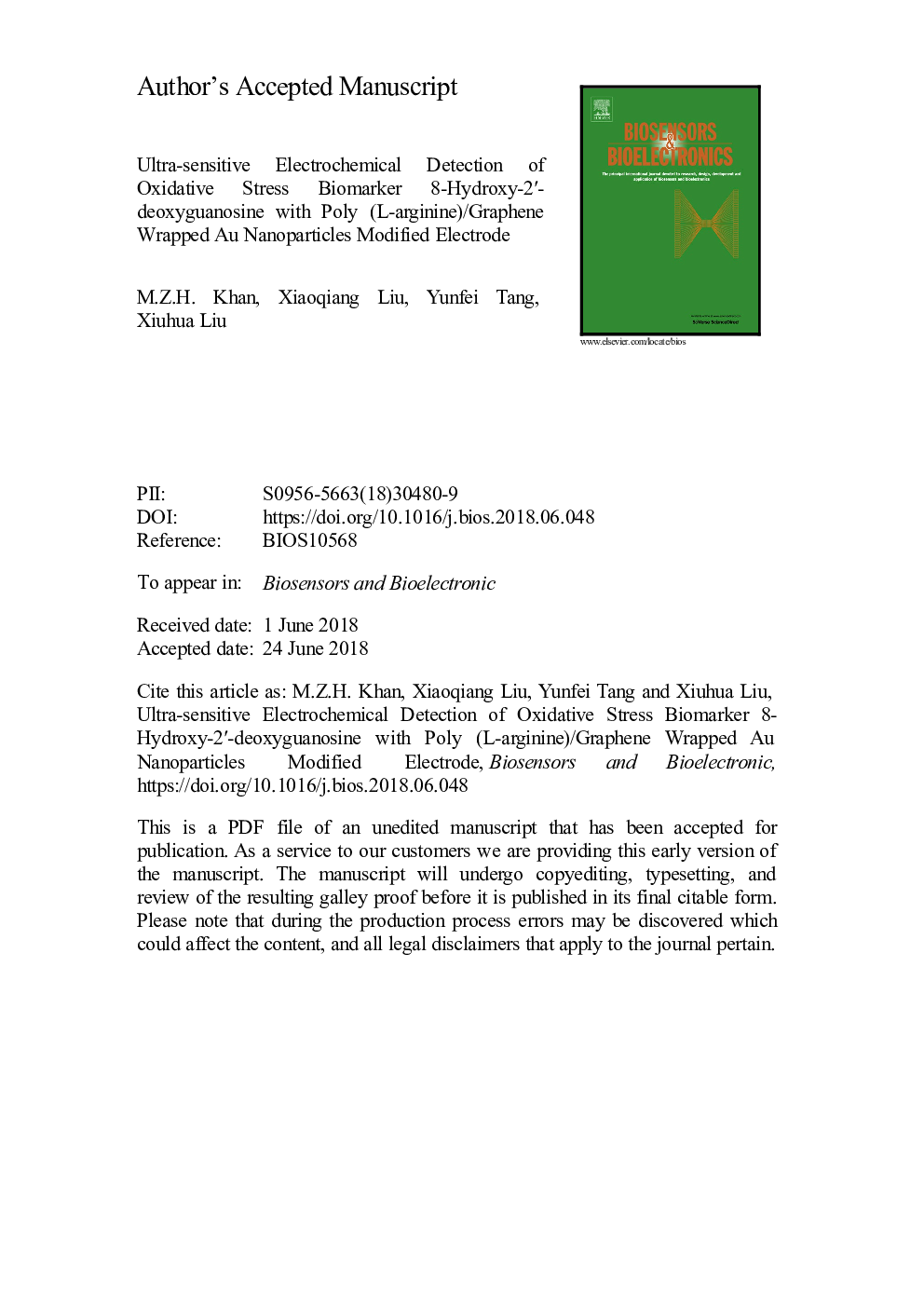| Article ID | Journal | Published Year | Pages | File Type |
|---|---|---|---|---|
| 7229081 | Biosensors and Bioelectronics | 2018 | 29 Pages |
Abstract
An innovative electrochemical sensor assembly relying on a simple “green” electrochemical reduction route is presented for the sensitive detection of 8-hydroxy-2â²-deoxyguanosine (8-OHdG), the most abundant oxidative product of DNA. The sensing film consisted of poly (L-arginine) and graphene wrapped Au nanoparticles was fabricated on glassy carbon electrode (GCE/P-Arg/ErGO-AuNPs) using subsequent 'layer-by-layer' regime through electrochemical technique. The proposed method was also successfully applied for the quantification of 8-OHdG in the presence of interfering biomolecules like ascorbic acid and uric acid. Scanning electron microscopy (SEM) was utilized to characterize the surface morphology of the composite electrode. Electrochemical characterizations of the bare and modified electrodes were carried out via cyclic voltammetry (CV) and electrochemical impedance spectroscopy (EIS). According to differential pulse voltammetry (DPV) results, there were linear relationships between the peak currents and the concentrations in the ranges of 1.0-100â¯nM (R2 = 0.996), and 0.5-10â¯ÂµM (R2 = 0.990), with a detection limit (S/Nâ¯=â¯3) of 1.0â¯nM. Furthermore, the proposed sensor was successfully applied for the determination of target analyte in human urine samples and a very high recovery percentage was obtained.
Related Topics
Physical Sciences and Engineering
Chemistry
Analytical Chemistry
Authors
M.Z.H. Khan, Xiaoqiang Liu, Yunfei Tang, Xiuhua Liu,
